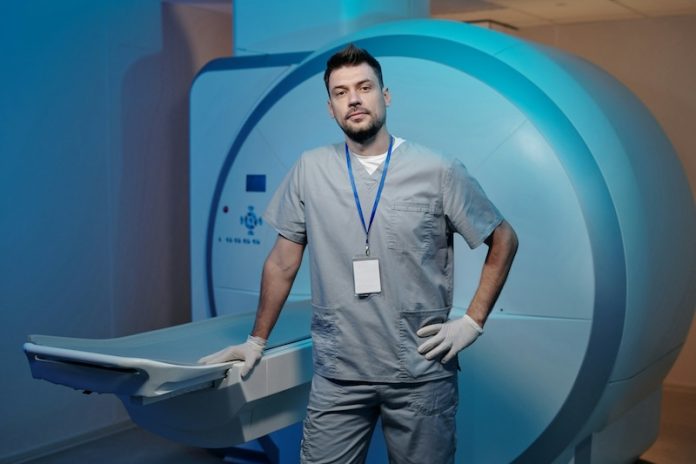
Scientists have developed two new imaging agents that work better than the only currently approved one for detecting tau tangles in the brain.
Tau tangles are abnormal protein clumps linked to Alzheimer’s disease, a condition that causes memory loss and cognitive decline.
The study, published in The Journal of Nuclear Medicine, compared these new agents with the existing one and found that they were more effective at binding to brain tissue affected by Alzheimer’s and were better at distinguishing diseased areas from healthy ones.
This breakthrough could improve how doctors track the progress of Alzheimer’s and test new treatments.
Alzheimer’s disease is a major health concern worldwide, affecting millions of people, mostly older adults. One of the key features of the disease is the buildup of tau protein tangles in the brain. These tangles interfere with brain cell function, leading to memory problems and other cognitive impairments.
The more tau tangles a person has, the more severe their symptoms tend to be. Detecting these tangles early is crucial because it allows doctors to diagnose and stage the disease more accurately and determine the best treatment options.
Currently, doctors use PET (positron emission tomography) scans to detect tau tangles. This is done by injecting a radiotracer—a special compound that binds to tau and makes it visible on a PET scan.
The only FDA-approved radiotracer for this purpose is called 18F-Flortaucipir. However, scientists have been searching for better alternatives, as this existing tracer has some limitations in accuracy and reliability.
A team of researchers led by Dr. Pedro Rosa-Neto at McGill University tested two new radiotracers, 18F-MK6240 and 18F-PI2620, against 18F-Flortaucipir to see which one worked best.
They conducted their tests on brain tissues donated by people who had Alzheimer’s, as well as healthy brain tissues. The researchers examined key brain regions involved in the disease, including the prefrontal cortex, hippocampus, and cerebellum.
The results showed that all three tracers could detect tau tangles in Alzheimer’s-affected brains, but the new ones performed better. 18F-MK6240 and 18F-PI2620 bound more strongly to diseased brain tissue and were more selective in identifying tau tangles, making them more effective than 18F-Flortaucipir.
This increased precision means that they could help doctors track changes in the brain more accurately over time.
Dr. Eduardo R. Zimmer, another researcher in the study, highlighted why this improvement is important. “These new imaging agents are better at detecting even small changes in the brain,” he explained. “This is crucial for Alzheimer’s research because it allows scientists to measure whether new treatments are working.”
One challenge in Alzheimer’s research is that different imaging agents can produce slightly different results. This study also emphasized the need for standardizing how these tracers are used, so researchers can compare data across different studies and clinics. Scientists are now working toward creating a universal scale for tau imaging to make results more consistent.
Analysis and Impact of the Study
This study is a significant step toward improving Alzheimer’s diagnosis and treatment. The discovery of better imaging agents means that doctors and researchers can now detect tau tangles more accurately.
This is especially useful for clinical trials testing new Alzheimer’s drugs, as scientists need reliable ways to measure whether a treatment is slowing down or stopping the disease.
If these new tracers are approved for medical use, they could help diagnose Alzheimer’s earlier, allowing patients to get treatment sooner. Early diagnosis is critical because it gives patients more time to prepare and access therapies that may slow the disease’s progress.
Overall, this research brings hope for better detection and treatment of Alzheimer’s disease. With improved imaging tools, scientists and doctors can continue making progress in the fight against this devastating condition.
If you care about Alzheimer’s disease, please read studies about vitamin D deficiency linked to Alzheimer’s and dementia, and strawberries can be good defence against Alzheimer’s.
For more health information, please see recent studies about foods that reduce Alzheimer’s risk, and oral cannabis extract may help reduce Alzheimer’s symptoms.
The research findings can be found in the Journal of Nuclear Medicine.
Copyright © 2025 Knowridge Science Report. All rights reserved.



